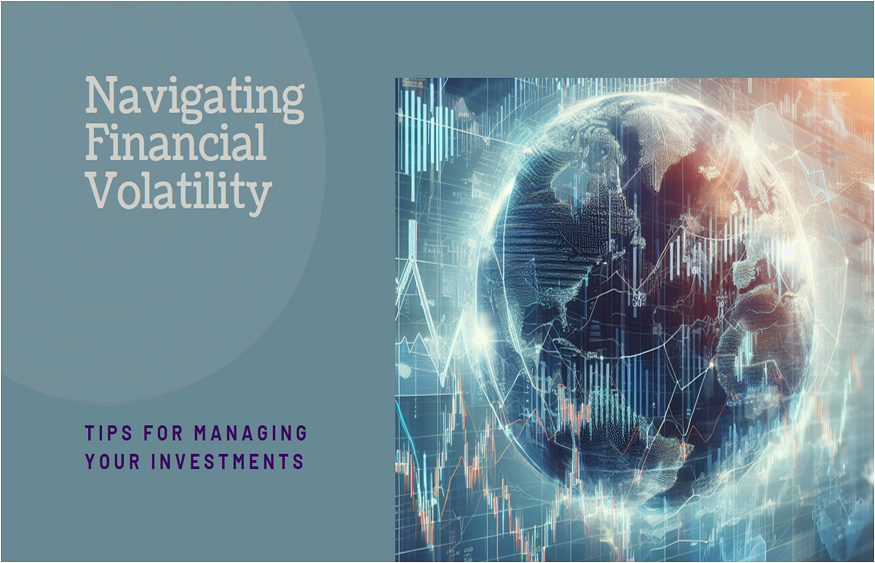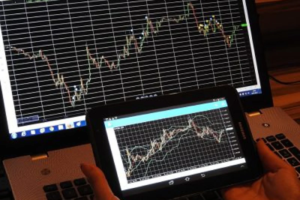What is Volatility in Financial Markets?
3 min read
Understanding the dynamics of financial markets involves grappling with the concept of volatility, a term that frequently peppers financial discussions. In simple terms, volatility is the measure of the degree of variation of a trading price series over a specific period. It’s like the market’s mood swings – the more unpredictable and erratic the price movements, the higher the volatility.
Defining Volatility
Volatility is quantified using statistical measures such as standard deviation or beta. Standard deviation gauges how much a set of numbers deviates from their mean, while beta measures an asset’s sensitivity to market movements. In essence, these metrics offer a glimpse into the market’s temperament, helping investors assess potential risks and rewards.
Types of Volatility
Historical Volatility
Historical volatility reflects past market fluctuations. Traders use this data to predict potential future price movements, providing a historical context for decision-making.
Implied Volatility
Implied volatility, on the other hand, is forward-looking. It’s inferred from options prices and indicates the market’s expectations regarding future price fluctuations.
Realized Volatility
Realized volatility assesses actual price changes over a specified period, offering a real-time perspective on market movements.
Volatility Index (VIX)
The Volatility Index, commonly known as VIX, is a popular measure of market sentiment. Often referred to as the “fear index,” VIX gauges the market’s expectations for future volatility. A high VIX suggests anticipation of increased market turbulence.
Causes of Volatility
Several factors contribute to market volatility. Economic indicators, political events, and speculative activities can all trigger significant price swings. The delicate balance between supply and demand in the market amplifies these effects.
Impact on Investments
Understanding volatility is crucial for investors. It directly influences the risk and return relationship. While high volatility poses increased risks, it also opens avenues for potential higher returns. Savvy investors use volatility as a tool to make strategic investment decisions.
Volatility Trading Strategies
Traders have developed various strategies to navigate volatile markets. Day trading, options trading, and hedging techniques are common approaches, each catering to different risk appetites and investment goals.
Volatility and Cryptocurrency
The cryptocurrency market adds a unique flavor to volatility. Digital currencies are known for their extreme price swings, presenting both challenges and opportunities for investors looking to capitalize on this emerging asset class.
The Fear-Greed Index
The Fear-Greed Index is a sentiment indicator that encapsulates the emotional aspect of the market. Ranging from extreme fear to extreme greed, this index provides insights into investor sentiment and can influence market dynamics.
Volatility in Different Asset Classes
Volatility manifests differently across asset classes. Equities, bonds, and commodities each have their own set of factors driving market fluctuations. Understanding these nuances is paramount for a well-rounded investment strategy.
Volatility and Economic Indicators
Economic indicators such as unemployment rates, GDP growth, and inflation can significantly impact market volatility. Investors keen on understanding market movements often keep a close eye on these indicators.
Managing Volatility in Portfolios
Diversification, asset allocation, and risk management techniques play a vital role in managing portfolio volatility. A well-diversified portfolio can help mitigate risks associated with unpredictable market movements.
Role of Central Banks in Managing Volatility
Central banks influence market stability through monetary policies and interest rates. Their actions can either exacerbate or alleviate market volatility, making them key players in the financial landscape.
Volatility and Black Swan Events
Black Swan events, rare and unpredictable occurrences, have the potential to cause massive market disruptions. Understanding the impact of such events is crucial for risk management.
Forecasting Volatility
Forecasting volatility involves intricate models and statistical analyses. However, the unpredictable nature of markets poses challenges in making accurate predictions. Traders and investors must navigate this uncertainty with caution.
In conclusion, volatility is the heartbeat of financial markets. It adds excitement, risk, and opportunity to the world of investing. Understanding the various facets of volatility equips investors to navigate the complex and dynamic nature of financial markets successfully.






